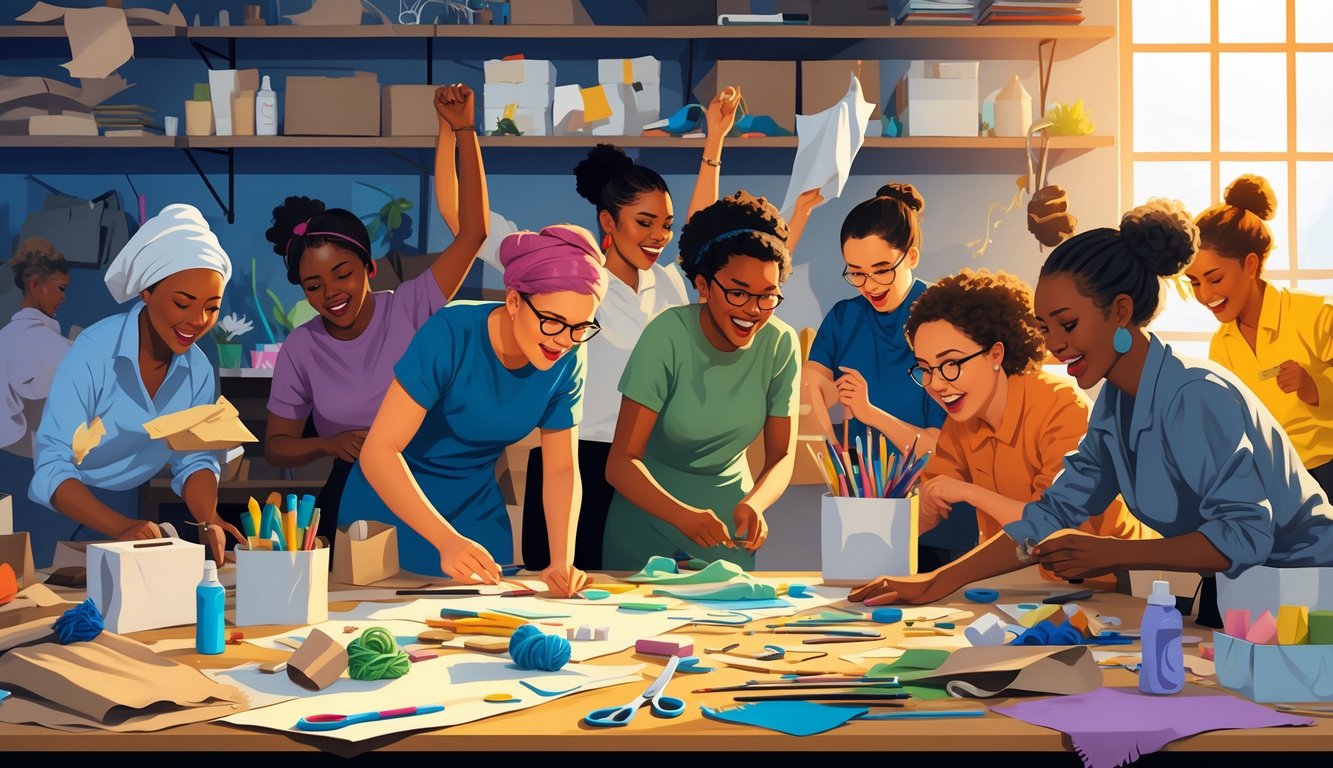
Labour Shortages and Their Effect on Material Scarcities
Flipping through supplier catalogs these days—every third item’s on backorder or marked “out of stock due to workforce limitations.” Translation: staff called in sick, nobody wants the job, and now the whole pipeline’s clogged. Labour bottlenecks material flow, especially when everyone’s scrambling for alternatives.
Labour Shortages in Crafting and Construction
If I got a nickel every time a project just…stalled because someone bailed on a shift? My supply closet would look less like a sad, barren shelf and more like, I don’t know, an actual workspace. The construction world is always making headlines about labor—especially after 2020 when everything froze, workshops and sites alike. Skilled trades seem to vanish overnight. I saw a survey from the Associated General Contractors of America—something wild like 89% of craft jobs unfilled in some regions last year. That’s not a typo.
People keep acting like 3D-printed resin or whatever “sustainable” plank is trending will magically fix it, but come on, if you don’t have hands on deck, your fancy CNC router is just a very expensive paperweight. Everyone’s screaming about material shortages, but honestly, no one mentions how even missing a single warehouse driver means your package of that weird cotton-linen blend just…never shows up.
Ran into a local contractor who’d paid double for OSB because the one guy who ran the sawmill controls got the flu. It’s not just crafters scrambling. Construction depends on this weird, fragile dance of timing and actual humans showing up. Take a look at construction industry chaos; when labor dries up, so does quality, price stability, and even safety. It’s a mess.
Strategies for Stretching Available Resources
Honestly? Nothing makes sense anymore—some people are hoarding velveteen scraps like it’s the last loaf of bread, others are all-in on buying clubs. I’m not even kidding: saw an online shop slap a “two yards per customer” limit on rare fabric, and people just started using their dog’s name to order more. My own method? I’ve got offcuts sorted by color (sometimes), made peace with seams that don’t match, and swapped brands so often I don’t even remember what “my usual” is.
Someone told me to try surplus construction materials. Not the worst idea, unless you care about matching dye lots, which, well, I used to. Resourceful folks are bartering thread for plywood, or teaming up to hit wholesale minimums. Those digital inventory alerts (SMS, emails, whatever) help—if you actually bother to set them up. I’m lazy; sometimes I just check the shelf and hope.
Stretching inventory isn’t rocket science. It’s mostly wild guessing, texting friends, and luck. I saw a workshop calendar that was basically a sticky note graveyard, all mapped out by material lead times—looked like a conspiracy theory, but hey, it sort of worked. Most articles skip how DIY scheduling and way too many messages keep the scraps and your sanity together. And if anyone claims they “never run out”? Yeah, I don’t buy it.
Supply Chain Management for the Modern Crafter
Every week there’s a new panic post: “Out of hemp cord!” “No acid-free cardstock!”—even glue, which, how is that a thing? The panic’s catching, even if you know the hacks for finding alternatives or dodging backorders. Every so often someone brags about “predictive analytics” for inventory, like that’s going to restock the bead aisle by magic. (Spoiler: it doesn’t. I tried.)
Building Strong Relationships with Suppliers
People love to say wholesale suppliers treat little orders like they do the big guys. Absolute lie. Still trips me up every holiday rush. The best move isn’t always chasing the lowest price—it’s sticking with the suppliers who actually remember you. One time a vendor threw in free velvet ribbon just because I called back fast. Little things, but they notice.
Not everyone in the crafts supply chain cares about emails, but if you text the warehouse manager or send a photo of your ideal thread, suddenly you’re not just another backorder. I ditched a giant distributor for a regional one just because they actually warned me about shortages instead of letting me find out the hard way. Seriously, a real relationship beats tracking numbers—unless I forget to update my order, then it’s just panic and cold coffee.
Managing Small-Scale Supply Chain Issues
How do a thousand wooden beads disappear so fast? I used to laugh at inventory software for solo shops, but after one too many “oh no, zero resin” moments, I caved. Now I get automated alerts when I’m running low. Tried hooking up a barcode scanner to my spreadsheet—felt ridiculous, but it shaved hours off stock checks (except when it scanned my cat as washi tape, which, whatever).
Still, the mess doesn’t stop. Material shortages still bite. I’ve wasted entire days scrolling “craft destash” Facebook groups for discontinued dye lots nobody’s seen since 2018. Supposedly the supply chain “stabilized” in 2024, according to manufacturing experts. Stable? Maybe. Reliable? Not for me. Started teaming up for bulk orders with other crafters—sometimes ends in weird trades (teal floss for leather cord, don’t ask). Biggest lesson: stay flexible, write everything down, and don’t trust Amazon at 2am. Once got scented glue instead of the real stuff. Nightmare.
Brexit, the Pandemic, and Other Global Influences
Looking at last year’s inventory, I can’t even believe how fast things spiraled—prices up, basics gone, and everything suddenly rare. Borders a mess, warehouses echoing. Every project’s a gamble now. Two years ago? Cakewalk.
How Brexit Altered European Supply Chains
Brexit customs rules ruined any hope of smooth shipping. I used to grab German fabric by the pallet; now, every delivery’s a lottery. Random delays, paperwork that makes no sense, surprise fees. Even the House of Commons Library admits Brexit made shortages worse. Gee, thanks.
Talked to Louisa, head buyer for a London textile group: “Brexit instantly doubled our lead times. Sabotage, honestly, but people just blame the border.” It’s not just fabric—printing ink, specialty stuff, even returns get stuck. I scribbled a table: pre-Brexit, four days from Rotterdam. Now? Could be two weeks. Pick your poison: rain delays, paperwork, or panic.
The Lasting Impact of the Pandemic on Material Flow
March 2020, I woke up to every bulk order bouncing for “supply chain disruptions.” COVID didn’t just close shops—it shredded global supply chains. 2022 review said Chinese PPE ran out first, then everything from dyes to sewing needles just vanished.
Never thought I’d see plywood and vegan leather go missing at the same time. Some expert in Newsweek said “panic buying,” but come on, who’s panic-hoarding snaps and rivets? I swapped elastic for beeswax on Instagram. It felt like some weird barter apocalypse. And even now, when stuff finally arrives, it’s pricier, but not better. Why is that?



